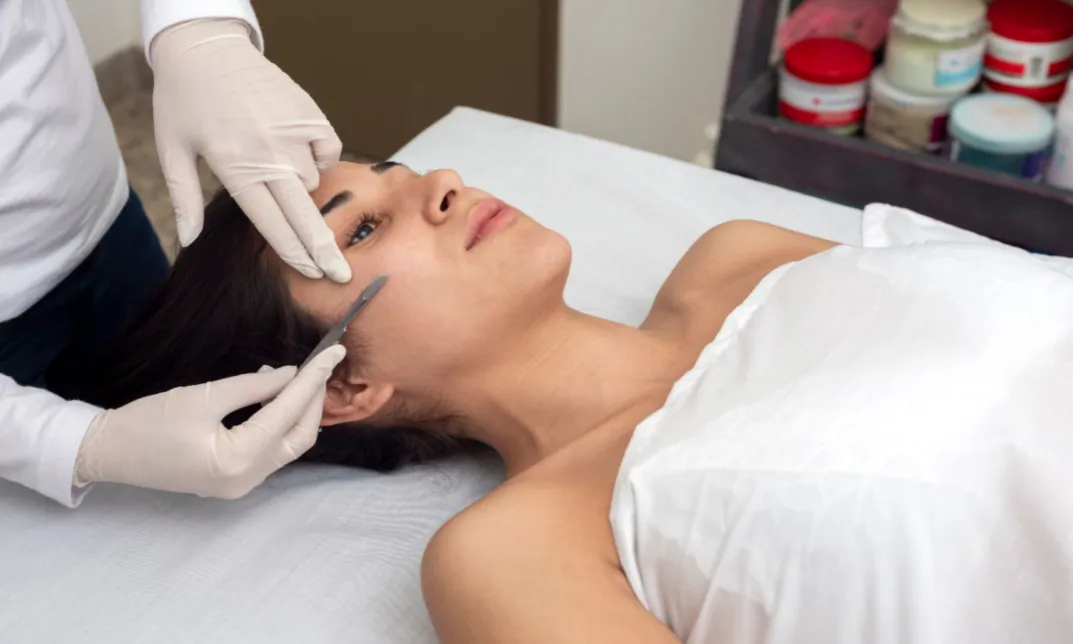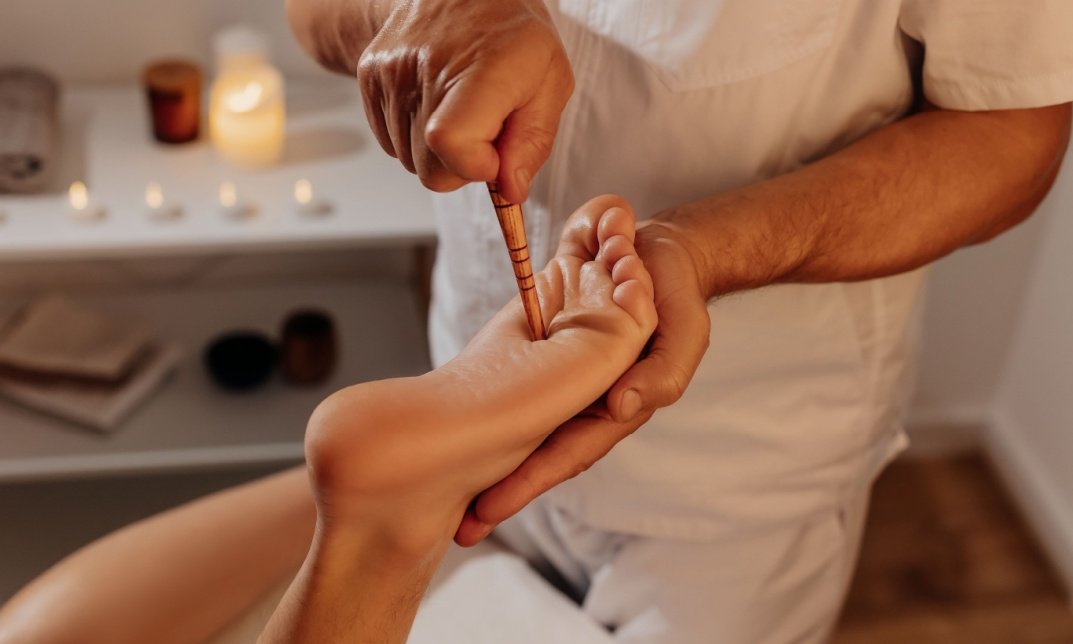No products in the cart.
When it comes to skincare, there are many treatments available, each claiming to improve skin texture and clarity. One of these treatments is dermaplaning. However, does dermaplaning lead to hair regrowth? This question is often at the forefront of concerns for those looking to improve their skin through exfoliation treatments.
Therefore, in this blog, we will explain dermaplaning and determine if it leads to hair regrowth.
What Is Dermaplaning?

Dermaplaning is a cosmetic treatment in which a sterile surgical blade gently removes dead skin cells and fine facial hair, often called “peach fuzz.” This process helps to improve skin texture by exfoliating the surface layer of the skin. It also helps with better product absorption, making skincare routines more effective. Therefore, many people use this method to achieve smooth and glowing skin without applying harsh chemicals or physical exfoliants.
Does Dermaplaning Lead to Thicker Hair Regrowth?
One of the most common myths surrounding dermaplaning is the fear of thicker or faster hair regrowth. Many people worry that once they remove peach fuzz from their face, it will grow back thicker or darker. However, this concern is mostly unfounded.
Hair regrowth after dermaplaning does not become coarser or darker. The structure of your hair is determined by genetics, and this process only removes the hair from the surface of the skin. Therefore, the process does not affect the follicle beneath the skin, which dictates how hair grows back. Thus, when the hair regrows, it usually feels the same as before, even if it might initially seem slightly sharper due to the blunt edge from shaving.
How Often Should You Dermaplane?
If you’re considering adding dermaplaning to your skincare routine, it’s important to know how often this treatment should be done. Since this procedure is a gentle exfoliation technique, it can be performed every 3-4 weeks. This timing allows your skin to fully regenerate and provides enough time for your hair to regrow naturally. So, by spacing out the treatments, your skin has time to adjust, reducing the risk of irritation.
Benefits of Dermaplaning
Dermaplaning offers a variety of benefits beyond just removing hair. This simple and effective treatment can enhance your overall complexion. Here are some key benefits:
- Exfoliates Dead Skin Cells: This procedure provides deep exfoliation by removing the dead skin cells that can cause dullness. As a result, your skin looks fresher and smoother, with an improved texture.
- Enhances Product Absorption: When dead skin cells and hair are removed, your skincare products can penetrate more effectively. This leads to better results from your serums, moisturisers, and treatments, as they can reach deeper into the skin.
- Provides a Smoother Makeup Application: Makeup applies more smoothly and evenly without peach fuzz or dry skin in the way. As a result, foundation, powders, and other products sit better on the skin, giving you a flawless finish.
- Helps with Acne Scars and Fine Lines: Over time, regular dermaplaning can help reduce the appearance of acne scars and fine lines. Removing the top layer of skin can promote cell turnover, making your skin look younger and more even.
Does Dermaplaning Work for Everyone?

Dermaplaning is generally safe for most skin types. However, it may not be ideal for everyone. Those with active acne or very sensitive skin might find this procedure a little too harsh, as it can cause irritation or lead to further breakouts. Therefore, it is always a good idea to consult with a skincare professional before starting any new treatment to ensure it suits your skin type.
What to Expect After The Procedure
After a dermaplaning session, your skin may feel slightly sensitive or pink. However, these effects typically subside within a few hours. It is crucial to follow post-treatment care to ensure the best results:
- Use Sunscreen: Since this procedure removes the outer layer of dead skin cells, your skin becomes more sensitive to the sun. Therefore, applying sunscreen is important to prevent any damage or hyperpigmentation.
- Avoid Harsh Products: In the days following your treatment, avoid using strong exfoliants or products that contain harsh chemicals. Opt for gentle skincare products to allow your skin time to heal.
- Moisturise Regularly: Keeping your skin hydrated is key. Moisturising after the procedure helps lock in hydration and soothes any post-treatment sensitivity.
Will Hair Grow Back Differently After Dermaplaning?
“Dermaplaning and Hair Regrowth” is often associated with the misconception that the treatment affects hair growth. However, as mentioned earlier, regrowth after dermaplaning will not be thicker, coarser, or darker. This method only removes hair from the surface level. Hair follicles remain untouched, which means they continue to grow hair at the same rate and texture as before.
For most people, the regrowth of peach fuzz is slow and unnoticeable. The soft vellus hair on the face grows back in the same way as it was before the procedure, maintaining its fine and light appearance.
Conclusion
Dermaplaning is a popular skincare treatment that offers smoother, brighter skin without altering your hair growth. Misunderstandings about hair regrowth after dermaplaning are common, but the truth is that the treatment doesn’t make hair grow back thicker or darker. With proper aftercare, you can enjoy clear, glowing skin. Moreover, if you’re interested in learning this technique and offering it to clients, enrolling in the Dermaplaning Training Course from the Wise Campus is a great way to gain the knowledge and skills needed to perform the treatment safely and effectively.






